7 Things You Don't Know About Moths, But Should

Facts about moths

The word "moth" may conjure up images of drab brown insects sticking to your screen door on a summer night. But there's much more to these mostly-nocturnal fliers than meets the eye.
Not only are moths extraordinarily diverse in color, shape and size, said David Moskowitz, a New Jersey entomologist and organizer of the first annual National Moth Week (July 23-29), they also offer a huge array of ecological benefits, from pollinating plants to feeding birds, bats and even people around the globe.
Here, OurAmazingPlanet has rounded up seven fascinating facts about these misunderstood insects:
There are more than 11,000 species of moths in the U.S. alone.
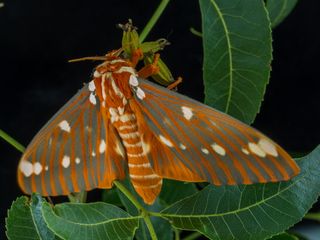
Moths outnumber butterflies, their nearest relative, by more than 10 to 1, said Matthew Shepherd, communications director and senior conservation associate at the Xerces Society, a nonprofit organization focused on insect conservation in Portland, Ore. There are upward of 11,000 moth species in the United States alone — that's more than all the bird and mammal species in North America combined.
Moths can range in size from smaller than a pencil tip to bigger than a songbird. The Atlas Moth, of Southeast Asia, considered the largest in the world, has a wingspan of nearly a foot (30 centimeters) — more than that of a Baltimore oriole. The Royal Walnut Moth, one of the biggest North American species, has a wingspan of about 4.5 inches (11 cm). [Images: Ancient Moth Colors]
Moths make great mimics.

Some moths are notorious for their ability to impersonate other animals. To avoid being eaten, some moths have evolved to look like less palatable insects, such as wasps, tarantulas and the praying mantis. Some moths even mimic bird droppings.
Moths are important pollinators.

While some moths, particularly caterpillars such as the corn earworm, are major agricultural pests, many others are important pollinators. "Their hairy bodies make moths great pollinators — they pick up pollen from any flower they land on," Moskowitz said.
Moth-pollinated flowers tend to be fragrant and white, such as the yucca plant. Plants with these features allow nocturnal moths to easily find flowers after dark.
Some moths pollinate by day. Hummingbird moths hover in front of flowers and unfurl their long tongues to sip nectar; they feed on a variety of flowers, including bee balm, honeysuckle and verbena.
Many adult moths don't eat.
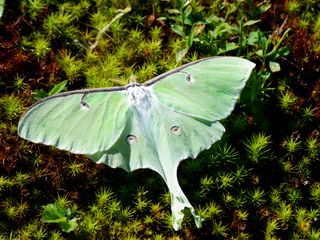
While some moths suck nectar, others don't eat at all. The adult Luna moth, for instance, doesn't even have a mouth. After it emerges from its cocoon, it lives for about a week. Its sole mission in life? To mate and lay eggs.
A male moth can smell a female more than 7 miles away.
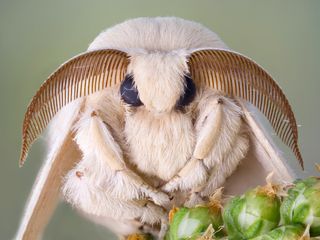
Though they lack noses, moths are expert sniffers. They detect odor molecules using their antennae instead of through nostrils. Male giant silkworm moths have elaborate, feather-shaped antennae with hairlike scent receptors that allow them to detect a single molecule of a female moth's sex hormone from 7 miles (11 kilometers) away.
They are important food for many animals.
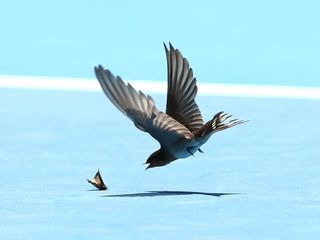
Because of their abundance, moths are major players at the bottom of the food chain. "They're a huge source of food for bats," Shepherd told OurAmazingPlanet.
In fact, some moths have evolved defenses against their winged predators. Tiger moths produce ultrasonic clicking sounds that effectively jam bat sonar, inhibiting the bat's ability to find them.
"Caterpillars are one of the most important things that moths offer in the ecosystem," Shepherd said. "They are food for everything else."
An estimated 95 percent of nesting birds rear their young on insects, and caterpillars make up a significant part of that, Shepherd said.
Moths: The next superfood?
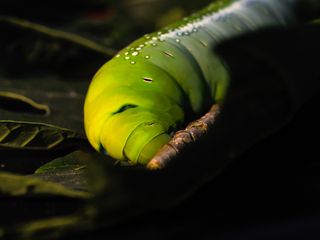
In some parts of the world, moths are a major food source for people, too. More than 90 percent of people in some African countries eat moth and butterfly caterpillars, according to a 2004 survey by the Food and Agriculture Organization of the United Nations. Caterpillars are packed with protein and healthy fats, and research shows that 100 grams of these insects provides more than 100 percent of the daily requirement of some vital minerals, such as potassium, calcium, zinc and iron.
Sign up for the Live Science daily newsletter now
Get the world’s most fascinating discoveries delivered straight to your inbox.
